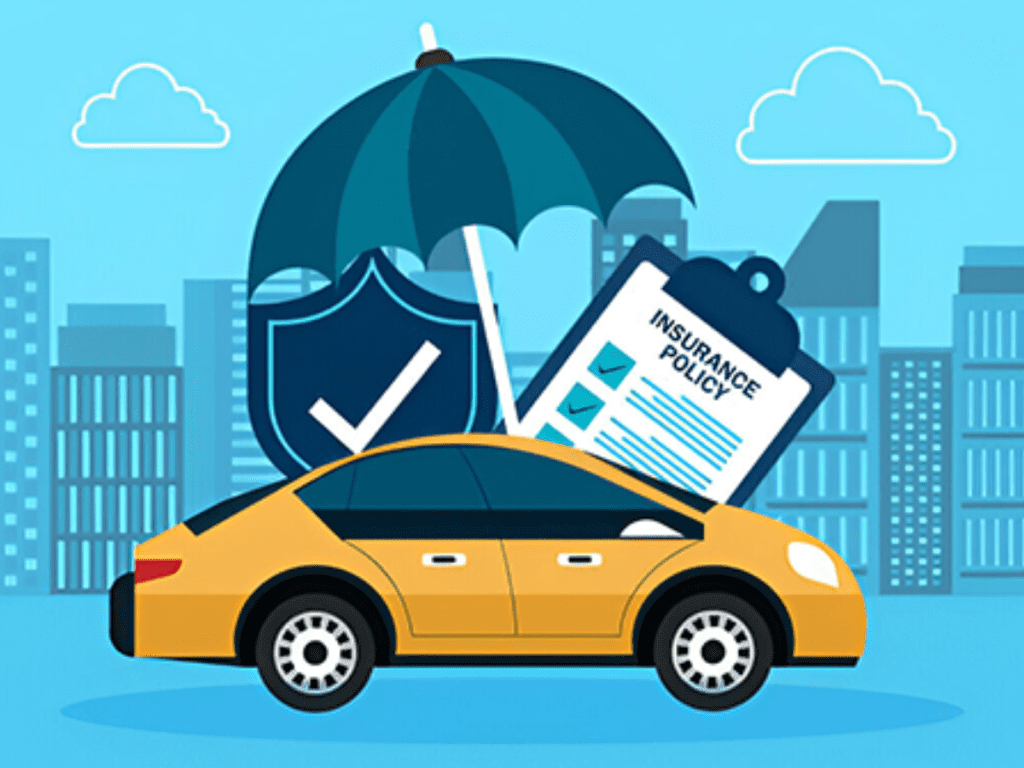Introduction
Auto insurance is a critical safety net for drivers. It offers financial protection in the event of an accident, theft, or damage to your vehicle. However, getting the most out of your auto insurance claims is not always straightforward. Many people are unsure about how to maximize their claims and make sure they receive the full compensation they are entitled to.
This article provides a comprehensive guide on how to maximize your auto insurance claims, ensuring that you make the most out of your coverage. Whether you’re filing a claim for the first time or seeking to improve your process for future claims, these tips will help you navigate the system efficiently and effectively.
1. Understand Your Policy
The first step in maximizing your auto insurance claim is to thoroughly understand your policy. Many drivers make the mistake of assuming that their insurance will cover everything, but insurance policies have different types of coverage, exclusions, and limitations.
Most standard auto insurance policies include several components:
- Liability coverage: This covers the damages you cause to others in an accident.
- Collision coverage: This covers damage to your vehicle caused by a collision, regardless of fault.
- Comprehensive coverage: This covers non-collision events such as theft, vandalism, or weather-related damage.
- Personal Injury Protection (PIP): This covers medical expenses and lost wages regardless of who caused the accident.
- Uninsured/Underinsured motorist coverage: This covers your expenses if the at-fault driver lacks sufficient insurance.
By knowing what’s included in your policy, you can identify areas of coverage that might help in specific situations and avoid surprises when you need to file a claim.
2. Report the Incident Immediately
The sooner you report the incident to your insurance company, the better your chances are of maximizing your claim. Delaying the report can lead to complications, such as losing important evidence or making it more difficult for the insurance adjuster to determine fault.
When you file a claim, provide as much detail as possible. Be clear about the circumstances of the incident, including the location, time, and any individuals involved. If there were witnesses, mention them. If the accident was your fault, don’t try to hide it; insurance companies are better able to assist you if they know the full scope of the situation.
3. Gather Evidence at the Scene
One of the most important steps in filing a claim is gathering evidence at the scene of the accident. This can make a huge difference when it comes to validating your claim and getting the compensation you deserve.
Here are some steps to take:
- Take photos: Capture clear images of the damage to all vehicles involved, the surrounding area, traffic signs, and any other important details.
- Get witness statements: If there were any witnesses to the accident, ask for their contact information and a brief account of what they saw.
- Collect police reports: If law enforcement responded to the scene, ensure that you receive a copy of the police report. This document will serve as an official record of the incident and may be crucial in disputes.
- Note the weather conditions: If weather played a role in the accident, document the conditions (e.g., wet roads, fog, snow).
Having a detailed record of the event will help your insurance company assess the situation more accurately and can improve your chances of a favorable outcome.
4. File a Claim with the Right Coverage
Once you have reported the accident and gathered evidence, file a claim under the appropriate type of coverage. For example, if the damage to your vehicle was caused by a collision, you should file a claim under your collision coverage. If your car was stolen, you should file a claim under comprehensive coverage.
Be sure to review your policy for the appropriate claim process. Some insurers may require specific documentation, such as an accident report or estimates from auto repair shops. By adhering to these requirements, you can avoid delays and ensure that your claim is processed smoothly.
5. Be Honest and Transparent
While it may seem tempting to exaggerate details or omit certain facts to improve the chances of your claim being accepted, it’s essential to be honest and transparent when filing an auto insurance claim. Providing false information, even unintentionally, can lead to the denial of your claim or even legal consequences.
Insurance companies have extensive resources to investigate claims, and they may catch inconsistencies between your statement and the evidence. To avoid complications, always provide truthful and complete information. If you are uncertain about any details, it’s better to say so rather than risk providing incorrect information.
6. Get Multiple Repair Estimates
After filing your claim, your insurance company may send an adjuster to assess the damage. In some cases, the insurance company will cover the cost of repairs based on the adjuster’s estimate. However, you may have the option to seek multiple estimates from different repair shops to ensure you are getting a fair deal.
Obtaining more than one repair estimate can help ensure that the insurance company does not undervalue the cost of repairs. If you find a repair shop that charges more than the insurance company’s estimate, discuss the difference with your insurer and provide evidence to support your case. Sometimes, insurers will adjust their offer if you can prove that the damage is more extensive than initially thought.
7. Consider Using an Independent Appraiser
If you disagree with the insurance company’s assessment of the damage or the payout, you have the option to hire an independent appraiser. This third-party expert can assess the damage to your vehicle and provide an unbiased opinion on the repair costs. If their assessment differs from the insurance company’s, they may help you negotiate a better settlement.
It’s important to note that insurance policies often have a clause that allows both parties to hire independent appraisers in the event of a dispute. Be sure to check the terms of your policy before taking this step.
8. Understand Depreciation and Deductions
Depreciation can have a significant impact on the amount you receive from an insurance claim, especially if your car is older or has a high mileage. Insurance companies often subtract the depreciated value of your vehicle from the claim payout, meaning that you may not receive the full amount it would cost to replace your vehicle or repair it to its original condition.
To maximize your claim, it’s important to understand how depreciation works and to ask the insurance company to provide a detailed breakdown of how they arrived at their payout. If you feel that the depreciation is too high, you can negotiate the amount or provide evidence to support a lower depreciation rate.
9. Review Your Medical Bills Carefully
If your auto insurance policy includes Personal Injury Protection (PIP), medical expenses related to an accident may be covered. Be sure to review your medical bills carefully and ensure that the charges are accurate. If you notice any discrepancies, contact your healthcare provider and the insurance company to resolve them.
In some cases, you may be able to recover lost wages or compensation for pain and suffering. If this is part of your claim, work closely with your insurer to ensure that all eligible expenses are included.
10. Stay Informed and Follow Up
Filing an auto insurance claim can take time, so it’s important to stay informed throughout the process. Regularly check in with your insurance adjuster or claims representative to ensure that your claim is moving forward. If you haven’t heard back within a reasonable timeframe, don’t hesitate to follow up.
Be patient but proactive. If there are delays or complications, try to resolve them quickly by providing any additional information or documentation that may be needed. The more involved you are in the process, the better the chances of a positive outcome.
11. Appeal if Necessary
If your auto insurance claim is denied or the payout is lower than expected, don’t be afraid to appeal the decision. Insurance companies have formal processes in place for reviewing denied claims, and you have the right to dispute their decision if you believe it was made in error.
When appealing, provide any new evidence or documentation that supports your case. If necessary, seek legal advice to ensure that you are following the correct procedures and that your rights are protected.
12. Learn from the Experience
After the claim process is complete, take the time to review your experience and learn from it. Think about what went well and what could have been done differently. By understanding how your insurance claim worked, you can make better decisions in the future and improve your chances of success when filing future claims.
Consider reviewing your auto insurance policy to ensure that you have adequate coverage for your needs. If you’ve made a claim recently, it may be a good time to reevaluate your coverage limits or switch providers for a better deal.
Conclusion
Maximizing your auto insurance claims requires understanding your policy, being prepared with evidence, and working closely with your insurance provider. By following the tips in this guide, you can improve your chances of receiving a fair and accurate payout when you need it the most. Remember, the more proactive and knowledgeable you are, the better your experience will be in the event of an accident or damage to your vehicle. Stay informed, be honest, and take the necessary steps to protect your interests.

